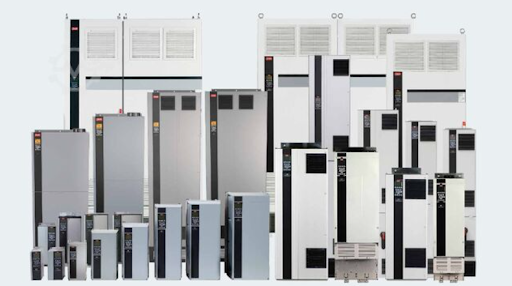
Variable Frequency Drives (VFDs) are integral components in optimizing the efficiency of HVAC (Heating, Ventilation, and Air Conditioning) systems. The implementation of VFDs, such as those produced by Danfoss, can significantly enhance system performance, reduce energy consumption, and extend the longevity of critical HVAC equipment. In this article, we will explore how VFD Danfoss helps improve the overall functionality of HVAC systems.
Understanding VFD Danfoss Technology
VFD Danfoss, a leading manufacturer in the industrial automation sector, provides VFDs that are designed to control the speed and torque of electric motors. HVAC systems, which rely heavily on motors for functions like air handling, pumping, and fan operations, can greatly benefit from the use of VFDs. The VFD Danfoss allows for the precise control of these motors, making it possible to adjust the motor’s speed to match real-time system demands, rather than relying on fixed-speed operation.
Energy Efficiency Improvement
One of the key advantages of using VFD Danfoss in HVAC systems is the significant improvement in energy efficiency. Traditional HVAC systems operate at a constant speed, even when the demand for heating or cooling fluctuates. This leads to unnecessary energy consumption. VFD Danfoss adjusts the motor speed based on demand, ensuring that only the required energy is used at any given time. For example, during periods of low load, the motor can run at a lower speed, thus reducing electricity consumption without compromising performance.
According to studies, using VFDs can reduce energy consumption by up to 50% in HVAC applications. This makes VFD Danfoss an ideal solution for energy-conscious organizations looking to minimize their carbon footprint and reduce operating costs.
Enhanced System Performance
VFD Danfoss not only reduces energy usage but also enhances the overall performance of HVAC systems. With the ability to control motor speeds, VFDs can help maintain optimal airflow, temperature, and humidity levels in various environments. For instance, in large commercial buildings or industrial facilities, precise temperature control is essential for comfort and productivity. By using VFD Danfoss, HVAC systems can adjust fan speeds, ensuring that the system responds quickly and accurately to changes in internal conditions.
Additionally, VFD Danfoss offers better load management, which prevents motors from operating under unnecessary strain. This leads to smoother, more consistent system performance and improved comfort for building occupants.
Reduced Wear and Tear on Equipment
HVAC systems are subject to wear and tear over time due to constant operation at fixed speeds. Motors, pumps, and fans may experience excessive mechanical stress, resulting in frequent breakdowns, costly repairs, and shortened lifespans for critical components. VFD Danfoss addresses this issue by enabling soft starts and stops, which reduces the mechanical stresses typically encountered during abrupt motor startups. By gradually accelerating and decelerating motors, the VFD Danfoss minimizes the risk of damage, thus extending the life of HVAC equipment.
The ability to modulate motor speed also reduces the wear on components such as bearings, belts, and pulleys, which are often subjected to high loads in fixed-speed systems. Consequently, using VFD Danfoss not only improves reliability but also reduces the need for costly maintenance and replacements.
Noise Reduction
Another benefit of using VFD Danfoss in HVAC systems is the reduction in noise levels. Fixed-speed systems often operate at maximum capacity, leading to loud fan and motor noises. With VFDs, the system can adjust fan speeds to match actual demand, which reduces the noise levels. This can be particularly important in environments where noise control is essential, such as in hospitals, offices, and residential buildings.
Integration with Modern Building Management Systems (BMS)
VFD Danfoss units are also designed to integrate seamlessly with modern Building Management Systems (BMS). This integration allows for better control, monitoring, and optimization of HVAC systems across the building. By connecting the VFDs to the BMS, operators can gain real-time insights into the performance of HVAC systems, enabling predictive maintenance and faster troubleshooting.
Furthermore, the integration allows for the use of advanced control strategies, such as demand-based ventilation, that can further optimize energy efficiency and occupant comfort. VFD Danfoss offers compatibility with a range of communication protocols, making it easy to integrate into existing building automation systems.
Conclusion
In conclusion, VFD Danfoss is an excellent solution for enhancing the performance of HVAC systems. By providing precise control over motor speed, VFDs help reduce energy consumption, improve system performance, minimize wear and tear on equipment, and lower noise levels. For organizations looking to optimize their HVAC operations, reduce operating costs, and contribute to environmental sustainability, VFD Danfoss presents a reliable and effective solution. By incorporating this advanced technology, HVAC systems can operate more efficiently and reliably, ensuring long-term benefits for both users and the environment.
